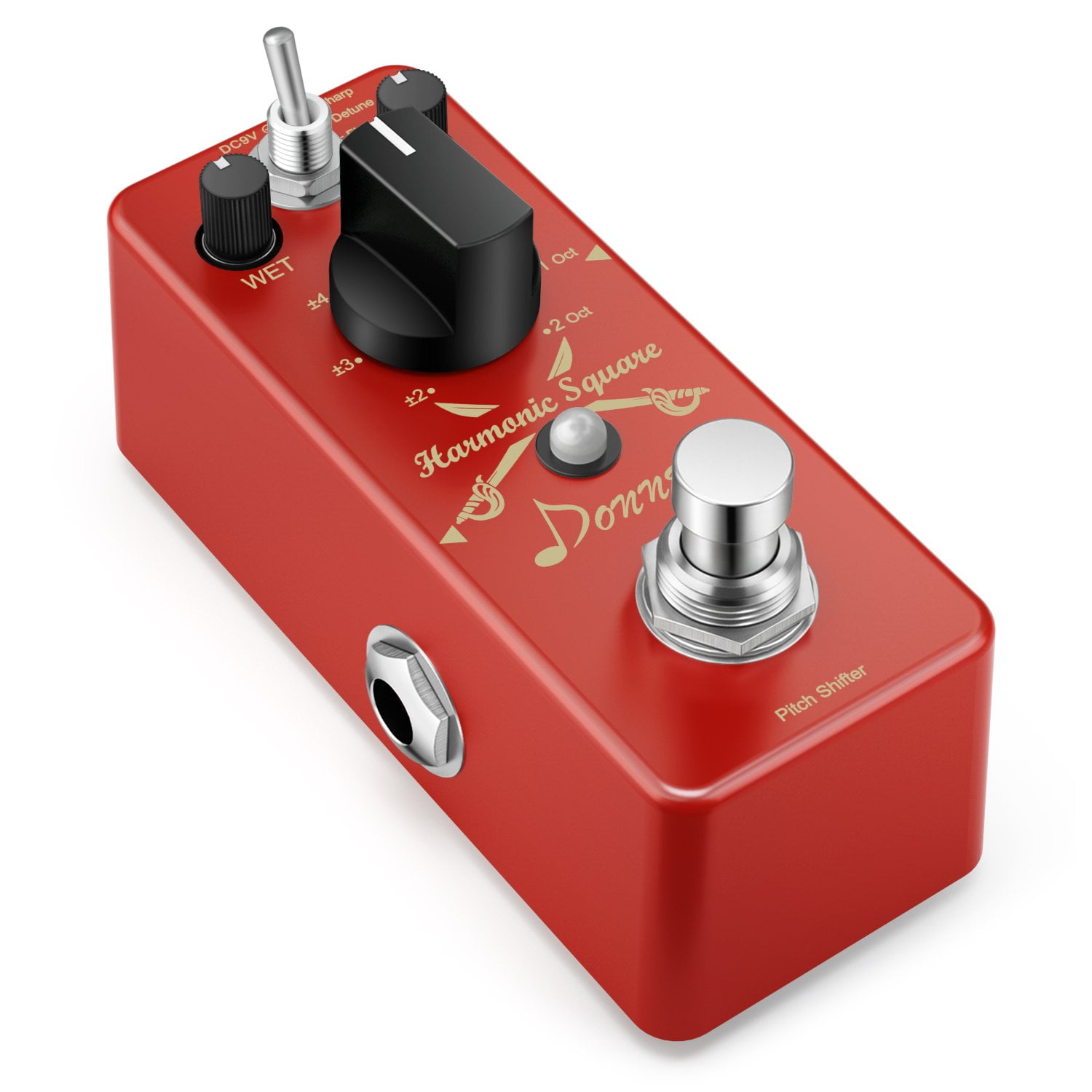

This octave pedal is highly recommended to guitarists of all levels. The user interface is simple, easy to use, and extremely intuitive with clearly labeled controls. You can do so by adjusting the knob, which has three different modes, up, down, or both. The Pitch Fork is a great octave pedal that transposes your guitar’s pitch up or down three octaves. Additionally, by meddling with its controls, you can create an intricate tone that is high-quality and definitely will awe your audience. You can go up or down octaves, either separately or simultaneously. This octave pedal is great if you are in need of some advanced sound effects. The wide array of 11 modes will definitely hold some surprises for you if you haven’t tried an octave pedal so far. If you need versatility with a simplistic and easy to use interface, this is the one to go for. Overall, the Koogo digital octave pedal is a great asset to any guitarist’s arsenal. Professionals would definitely enjoy its versatility. Beginners will find it easy to use due to its intuitive interface, with clearly labeled knobs and switches you will have a lot of fun experimenting with all of its features. This digital pedal is a great addition to any level player. It includes a wide variety of 11 modes so that you get the best value for your money, and the tonality of the effect is truly astonishing. Koogo digital is a great, sturdy, and rock-solid digital pedal with dynamic octave harmonics and can elevate your instrument to new heights. It is user-friendly, and this digital pedal can create some amazing dynamic effects. It allows you to create beautifully crafted tones, and the wide variety of modes can be used to add personality to your tunes. This pedal can easily make your 6-string guitar sound like a 12-string. If you are a beginner and you are on a budget, you might disregard this as it will not affect you as much when practicing at home – still, it’s a good feature to have in a great octave pedal. Loud clicks and noises are definitely a no-no if you are performing live in front of an audience. True by-Pass TechnologyĪnother ideal feature is the true by-pass technology, which will make the pedal not interfere with your tones when it is disengaged. Additionally, the interface should be easy to understand and use. A good quality octave pedal will ideally be made of aluminum alloy or some hard and durable plastic. No one likes easily damaged plastic cases, that are fragile and difficult to manipulate. High-QualityĪnother great feature, of course, would be the overall quality of the pedal. Tracking is the process where the pedal accurately detects your signal and then modifies it – which makes it pretty intuitive why tracking needs to be flawless. Otherwise, the sounds you hear will be quite a mess. Whether you go for digital or analog, tracking has to be perfect. Here are the top characteristics that make up a great octave pedal: Flawless Tracking You can add some more sizzle with extra octaves, fatten up riffs, or drop the sounds down and pretend you are a bassist. Or you can just remove the original tone completely from the mix.

Some octave effects allow you to either affect the note and mix it with the original tone. This means that you play a note, but it will be an octave higher or lower than you played it – or up to 3.5 octaves higher or lower. Some models can shift by up to 3.5 octaves. Most octave pedals are used to detect the note/notes you play and shift them exactly by 12 notes (1 octave) up or down.


 0 kommentar(er)
0 kommentar(er)
